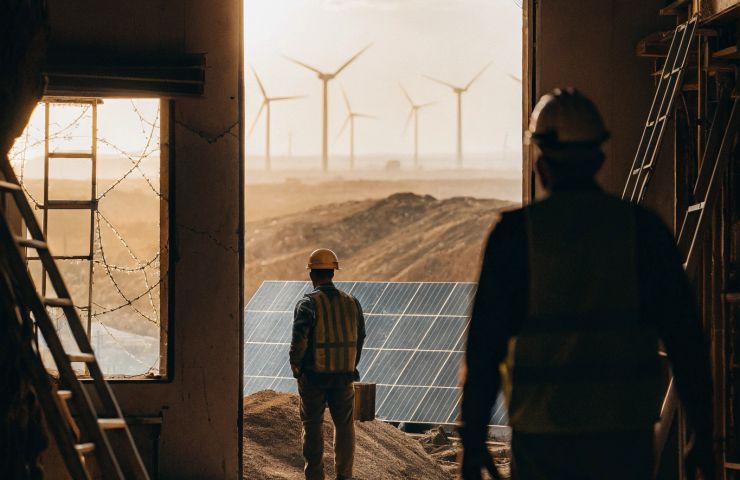
Hydrogen Production Pivot: Air Products Shutters US Projects, Advances NEOM and Louisiana Plans
October 24, 2025On May 10, 2025, Air Products and Chemicals quietly revamped its earnings outlook and reshuffled its hydrogen production game plan. After 43 straight years of boosting dividends, they decided to hit pause on several high-profile US ventures—courtesy of new Section 45V tax credit tweaks and tougher cost math. Instead, they’re backing overseas bets with firmer government support and locked-in offtake, especially the $5 billion NEOM green hydrogen project in Saudi Arabia and the Louisiana Clean Energy Complex.
US Pullback: Projects Shelved
They put some of their boldest US plans on ice. The green hydrogen plant in Massena, New York—set to run off hydro power from the New York Power Authority—got the axe when the credit rules tightened. Out West, a $2 billion deal to supply sustainable aviation fuel with World Energy in Paramount, California, went south. Over in Texas, both a carbon monoxide facility meant for Eastman Chemical and a $4 billion electrolyzer project with AES Corporation were quietly shelved.
These cancellations aren’t just headlines. Hundreds of construction and operations jobs vanished, local contractors lost multi-year agreements, and regions counting on a hydrogen boom are now bracing for slower growth. Without these projects, momentum for building out hydrogen infrastructure—from refueling stations to feedstock pipelines—takes a serious hit.
Doubling Down Abroad
It’s not all pullbacks, though. Air Products is doubling down where the policy winds feel more reliable. That’s the story behind the 80% complete NEOM plant in northwest Saudi Arabia, built alongside ACWA Power. When it fires up in late 2026, its 4 GW of electrolysis—powered by sun and wind— should crank out roughly 650 metric tons of green hydrogen every day. Enough to keep ships cruising, feed industrial giants, or be turned into green ammonia for export.
Back in the States, the Louisiana Clean Energy Complex is carving out a niche for blue hydrogen. Steam methane reformers paired with a 95% carbon capture system sit near major petrochemical hubs, tapping cheap natural gas and existing CO₂ storage. It’s early days—the first volumes are slated for 2027—but thanks to clear state incentives and hungry industrial customers, this project is marching ahead.
Tax Credit Twist
The real trigger for the US retreat? The IRS’s final guidance on Section 45V under the Inflation Reduction Act. New rules now demand a bigger share of clean electricity inputs and stricter emissions accounting across the hydrogen lifecycle. Projects deep into engineering suddenly struggled to hit the thresholds for full tax credits, throwing their financial models out of whack.
Politics hasn’t made things easier. Some states have muscled in new local requirements or pulled matching incentives, and wild swings in natural gas prices—plus supply-chain bottlenecks—have driven up costs. Bottom line: you can’t bet the ranch on federal credits alone. Developers need solid, predictable local support to back multi-billion-dollar ventures.
Investor Perspective
Even with the shake-up, Air Products’ streak of consecutive dividend raises lives on at 43 years—a feat few can match. Management kept its full-year EPS forecast pegged at about $10.30–$10.60, while flagging that delays or budget overruns could squeeze margins. The dividend yield hovers near 3%, which looks appealing in today’s low-rate world, but the message is clear: they’re keeping a tight leash on capital.
CEO Eduardo Menezes has made it plain—no more chasing deals where policy or market risk outstrips the upside. Blue and green hydrogen still top the wish list, but the plan is to lean into partnerships and corners of the globe where government frameworks and offtake contracts paint a clearer picture.
What Lies Ahead
Air Products’ course correction underlines a simple truth for industrial decarbonization: big ambition needs policy certainty and real off-take agreements. In the US, hydrogen infrastructure could get a second wind if regulators tweak credit guidelines and utilities or manufacturers step up demand. Alternatively, federal and state incentives might need another overhaul to reduce the risk for investors.
Globally, the NEOM and Louisiana projects are a window into where the hydrogen economy is finding its footing—either through dedicated renewables or an integrated petrochemical support system. Other gas and chemical majors will be watching closely, likely adopting a similar mantra: go full throttle where the economics are crystal clear, and keep a safe distance from higher-risk zones. That’s a lesson for any company chasing sustainable energy goals in a landscape that’s still fast-moving.
At the end of the day, if you’re keeping tabs on the hydrogen transition, remember that technology is only half the battle. A stable regulatory environment, strong partnerships, and disciplined capital allocation write the other half of the story.



 With over 15 years of reporting hydrogen news, we are your premier source for the latest updates and insights in hydrogen and renewable energy.
With over 15 years of reporting hydrogen news, we are your premier source for the latest updates and insights in hydrogen and renewable energy.
A major component of the worlds future hydrogen economy will be sodium-ion batteries. Soon both hydrogen and sodium-ion batteries will be produced on a large scale by nations around the world. Sadly, the US has lost a of sense direction and will fall behind in the advancement of these important energy technologies. Fossil fuels are now no longer sustainable or a safe energy source. The planet has reached the tipping point.
Energy for the world, endless energy and climate warming solved.